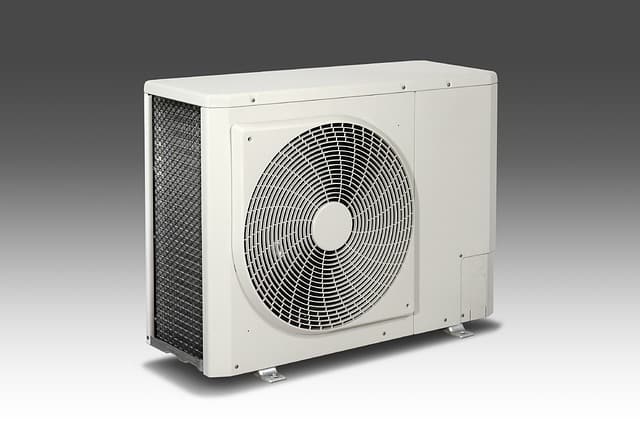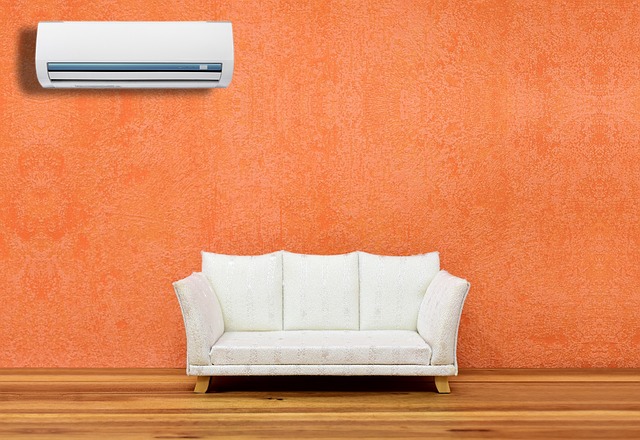Introduction – AC Unit Outside Not Turning On
When your outdoor AC unit is not turning on, it can be a frustrating experience, especially during the hot summer months. This article aims to help you understand the components of your outdoor AC unit, and provide you with troubleshooting steps to help you identify and solve the issue. Keep in mind that if you’re unsure about any aspect of the troubleshooting process or suspect a more severe problem, it’s best to contact an HVAC professional to diagnose and repair the issue.

What Is An Outdoor AC Unit
The “outdoor AC unit” is commonly referred to as the condenser unit, a crucial component of a central air conditioning system. To better understand its role, it’s essential to know the parts of an air conditioner and their functions.
An air conditioning system consists of two primary components: the indoor unit, known as the evaporator or air handler, and the outdoor unit, known as the condenser. The main function of the condenser is to release the heat absorbed by the refrigerant from inside your home into the outside air. The system works together to transfer heat and cool the indoor space.
The indoor unit, or evaporator, is typically found inside a closet, attic, or basement, and it contains the evaporator coil and an air handler, which includes a blower fan. The evaporator coil is responsible for absorbing heat from the indoor air, while the air handler circulates the cooled air throughout your home.
The outdoor unit, or condenser, houses the compressor, condenser coil, and a fan. The compressor is responsible for pumping refrigerant through the system, enabling the refrigerant to absorb and release heat as it moves between the indoor and outdoor units. The condenser coil helps dissipate the heat absorbed by the refrigerant, allowing it to cool down before returning to the indoor evaporator coil. The fan in the outdoor unit aids in moving the hot air away from the condenser coil, expelling it into the atmosphere.
In summary, an air conditioning system relies on the collaboration between the indoor evaporator unit and the outdoor condenser unit to efficiently remove heat from your home and provide a comfortable living environment.
Troubleshooting Steps – Outdoor AC Unit Not Turning On
Before diving into more advanced troubleshooting steps, it’s essential to check if your thermostat is set correctly, as it controls the outdoor AC unit. Ensure that it’s set to “cool” mode and that the temperature setting is below the current room temperature. If the thermostat has batteries, make sure they are functioning.

Check Thermostat Settings
If the thermostat settings are correct, inspect the circuit breakers in your home’s electrical panel. The outdoor AC unit has a dedicated circuit breaker, which could have tripped, causing the unit not to turn on. Reset the breaker if necessary, and check if the unit starts working.
Check The Circuit Breaker On The Condenser Circuit
The condenser unit of an air conditioning system is powered by a circuit because it requires a dedicated electrical supply to ensure proper and safe operation. A circuit is a closed-loop path that allows the flow of electric current between a power source and the electrical devices connected to it, such as the condenser in this case. In a residential setting, circuits are typically designed to handle specific electrical loads, and each circuit is connected to a circuit breaker to protect it from potential overloads or short circuits.
A circuit breaker is a safety device designed to interrupt the flow of electricity in a circuit when the current exceeds a predetermined safe level. This prevents electrical fires, damage to the electrical devices, and potential harm to individuals. Each circuit in a home has a corresponding circuit breaker, which can be found in the main electrical panel, also known as the breaker box or distribution board. The main electrical panel is usually located in the garage, basement, or utility room and houses all the circuit breakers for the various circuits in your home.
When the condenser unit of an air conditioning system is powered by a circuit, the circuit breaker associated with that circuit plays a vital role in ensuring the safe operation of the system. In the event of an electrical overload or short circuit, the circuit breaker will trip, cutting off the power supply to the condenser and preventing potential damage to the unit or other components. It is important to locate and familiarize yourself with your home’s main electrical panel and the corresponding circuit breakers to troubleshoot any issues related to the power supply for your air conditioning system.
Outdoor Power Switch
Next, examine the outdoor AC unit’s power switch, usually located in a small box mounted on the wall near the unit or inside a nearby electrical panel. Make sure the switch is in the “on” position.
Condensate Drain Line
If the unit still doesn’t turn on, check the condensate drain line, which removes moisture from the indoor air handler. If the drain line is clogged, a safety switch might prevent the outdoor AC unit from operating. Clear any blockages and reset the switch if needed.
Obstructive Debris
Inspect the outdoor unit for signs of debris, such as leaves or dirt, which could obstruct airflow around the condenser coil. Clean the area around the unit and remove any obstructions to ensure proper airflow.
If none of these steps resolve the issue, the problem may lie with the unit’s internal components, such as the capacitor, compressor, or fan motor. In such cases, it’s best to contact a professional HVAC technician to diagnose and repair the problem.
Conclusion – Outdoor AC Unit Not Turning On
By understanding the components of your outdoor AC unit and following the troubleshooting steps provided, you can often identify and solve the issue without requiring professional help. Regular maintenance can also help prevent future problems, ensuring your air conditioning system continues to keep your home cool and comfortable.
